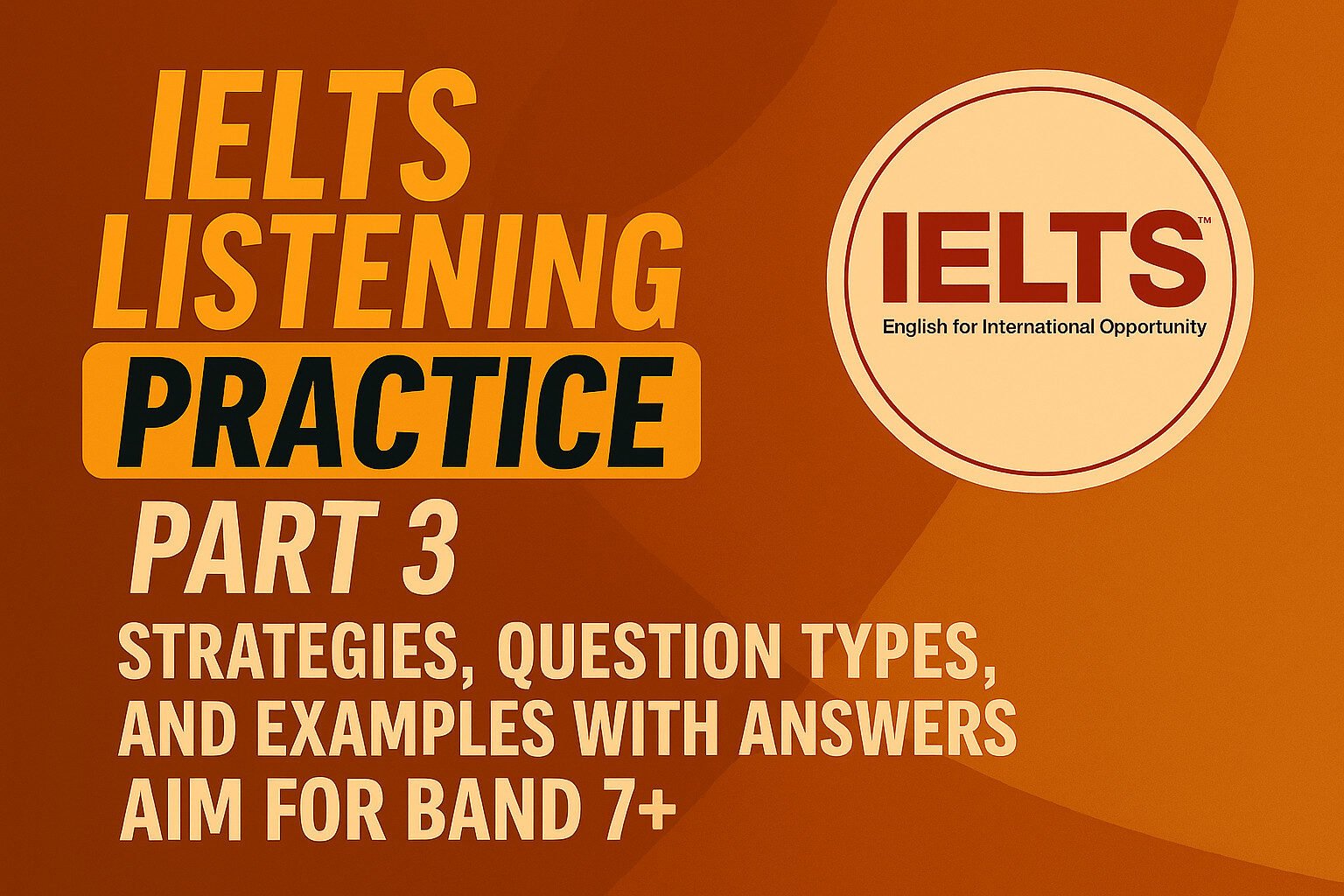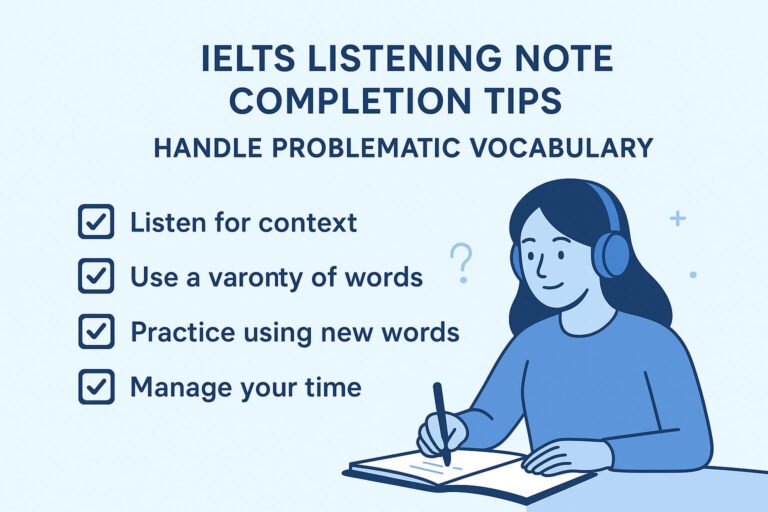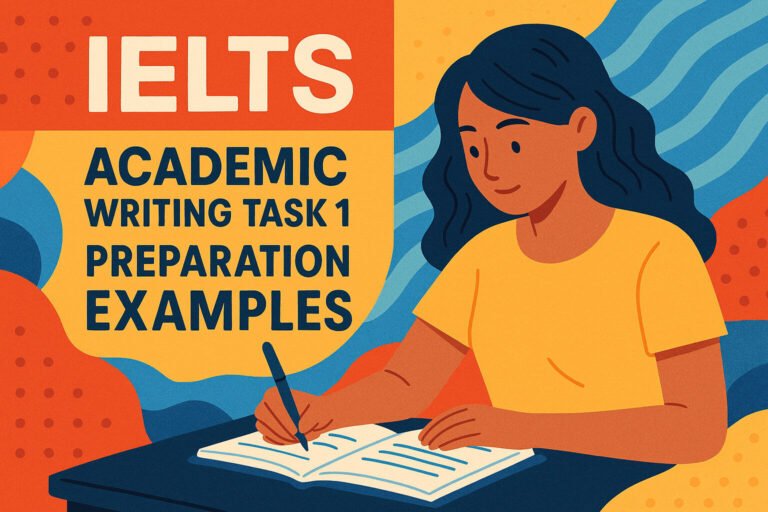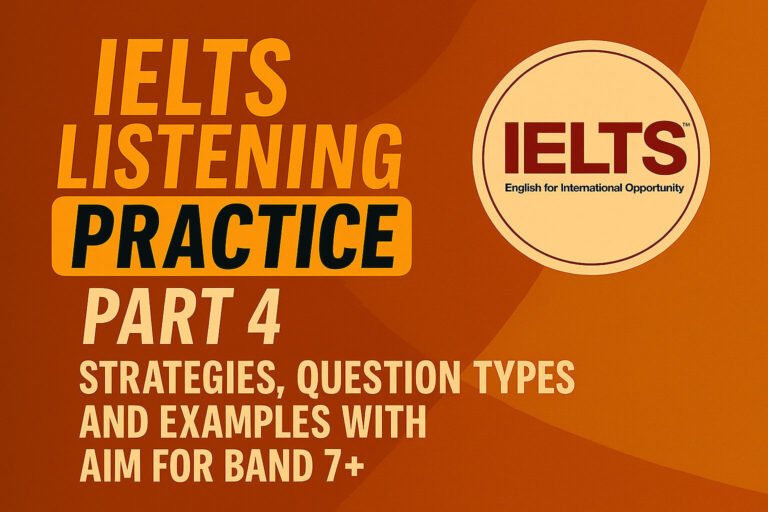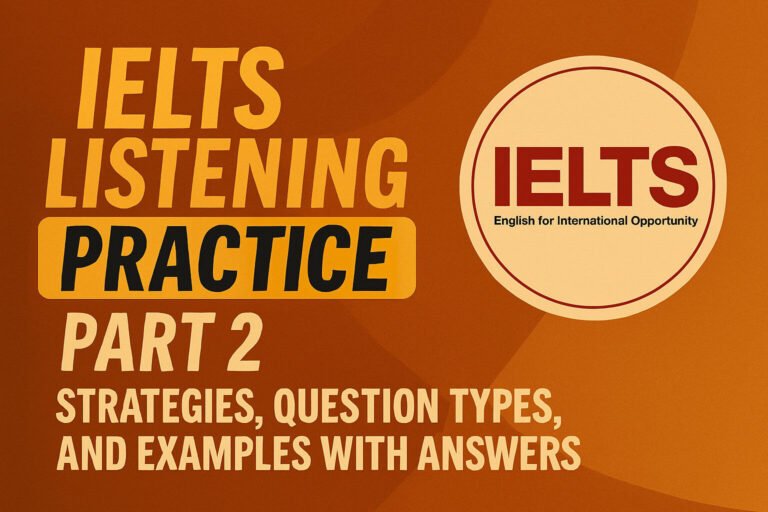Improve with IELTS listening practice part 3 strategies, question types, and examples with answers. Aim for band 7+—start your free practice now!. Feeling overwhelmed by the group conversations in IELTS Listening Part 3? Many aspirants find it hard to follow multiple speakers and catch key details under pressure. This guide on IELTS listening practice part 3 will walk you through effective strategies, question types, and real examples to help you master this section. You’ll gain confidence and aim for a higher band score with consistent practice.
We’ll break down the structure, offer tips, and provide exercises to turn challenges into opportunities. Let’s get started on your path to success!
What is IELTS Listening Part 3? A Quick Overview
IELTS Listening Part 3 involves a discussion between 2-4 speakers, often students or tutors, talking about an academic topic. It lasts about 3-4 minutes and includes 10 questions played once. The audio reflects real-life scenarios, like a group project or seminar.
This section tests your ability to understand opinions, suggestions, and detailed information. It’s more complex than earlier parts, making IELTS listening practice part 3 essential for improvement. Use the preview time to prepare and stay focused.
Familiarity with this format helps you stay calm during the test.
Why IELTS Listening Practice Part 3 is Crucial
Practicing IELTS listening practice part 3 builds your skill to follow multiple voices and catch nuances. Many struggle with overlapping speech or unfamiliar terms in academic contexts.
Regular practice improves your ability to predict answers and note key points. It also exposes you to varied accents and speeds, boosting adaptability. With effort, you can turn this section into a strength.
Think of it as a workout for your ears—consistency pays off.
Common IELTS Listening Part 3 Question Types
Understanding IELTS listening part 3 question types is key to scoring well. This section often features tasks like matching and multiple choice that require listening for opinions and details.
Here are the main IELTS listening question types with examples:
- Matching: Link speakers to opinions or roles. Example: Match students to project ideas.
- Multiple Choice: Choose from A, B, C, or D. Example: “What does the tutor suggest? A) More research B) Less focus C) Group meeting”.
- Note Completion: Fill gaps in notes. Example: “Project deadline: ________”.
- Flowchart Completion: Order steps or ideas. Example: Sequence a research process.
- Sentence Completion: Fill blanks in sentences. Example: “The group needs ________ resources.”
- Short Answer Questions: Answer in 1-2 words. Example: “What is the topic?”
These IELTS listening part 3 question types with answers help you practice accuracy. Check word limits carefully.
Proven Strategies for IELTS Listening Practice Part 3
To excel, use the preview time to read questions and predict answers. Focus on keywords like “opinion” or “suggestion” to guide your listening.
Listen for speaker changes—names or pauses signal shifts. Take brief notes on main points, avoiding full sentences.
Review answers during transfer time to catch errors. Action step: Practice one audio daily with a timer to simulate test conditions.
Stay positive, even if you miss a point; keep moving forward.
IELTS Listening Part 3 Question Types with Answers: Real Examples
Let’s explore IELTS listening part 3 question types with answers using a sample about a student project.
Example 1: Matching
Match the students to their roles. Write A, B, or C.
A) Sarah
B) James
C) Priya
- Research ________
- Presentation ________
- Editing ________
Answers: 15. A, 16. C, 17. B (based on audio: “Sarah will research, Priya will present, James will edit.”)
Tip: Note speaker names early.
Example 2: Multiple Choice
Choose the correct letter, A, B, C, or D.
What is the main challenge?
A) Time
B) Resources
C) Skills
D) Interest
Answer: A) Time
In audio: “Our biggest issue is running out of time.”
Example 3: Note Completion
Complete the notes. Write NO MORE THAN TWO WORDS.
Project topic: (18) ________ energy
Meeting time: (19) ________ p.m.
Final submission: (20) ________
Answers: (18) solar (19) three (20) next week
These IELTS listening question types with examples show how to align audio with questions.
Free IELTS Listening Practice Part 3 Exercises
Try this IELTS listening practice part 3 exercise on a tutorial discussion.
Questions 21-24: Sentence Completion
Complete the sentences. Write NO MORE THAN TWO WORDS.
- The tutor suggests improving ________ skills.
- The group plans to use ________ data.
- The deadline is set for ________.
- They need help with ________.
Hypothetical answers: 21. writing 22. survey 23. Friday 24. analysis
Practice: Use free audios from IELTS official sites and check answers.
Another: Flowchart completion on a research plan.
Order: (25) Research (26) Draft (27) Review
Answers: Follow audio sequence.
Do these daily to build confidence.
Tackling Multiple Speakers in Part 3
With several voices, identify each speaker by name or role. Predict their contributions based on questions.
Focus on agreements or disagreements for clues. In IELTS listening practice part 3, replay audios to spot missed details.
Action: Practice with group conversations to get used to interruptions.
Vocabulary for IELTS Listening Part 3 Topics
Academic themes include projects, studies, or tutorials. Learn words: Analysis (review), Feedback (comments), Deadline (due date).
LSI: “group discussion audio,” “academic listening.“
Add these to your notes during practice.
Advanced Techniques for Band 7+ in Part 3
For higher scores, anticipate paraphrases— “finish” for “complete.” Ignore irrelevant chats between speakers.
Use IELTS listening practice part 3 with background noise to mimic test conditions. Analyze transcripts to refine skills.
Table: IELTS Listening Part 3 Question Types Guide
| Type | Description | Example Focus | Tip |
|---|---|---|---|
| Matching | Link speakers | Roles or ideas | Note names |
| Multiple Choice | Select best | Suggestions | Read all options |
| Note Completion | Fill notes | Deadlines | Predict words |
| Flowchart Completion | Order steps | Research plan | Follow sequence |
| Sentence Completion | Gap fill | Resources | Use context |
| Short Answer | Brief response | Topics | Stick to limits |
This table summarizes IELTS listening part 3 question types for quick reference.
Avoiding Common Mistakes in Part 3
Don’t mix up speakers—label notes with initials. Many miss transitions; listen for “now” or “next.”
Overwriting loses marks; respect word limits. In practice, review why you erred.
Tip: Group practice with friends to simulate discussions.
Your Daily IELTS Listening Practice Part 3 Plan
Day 1-3: Master one type, like matching.
Day 4-6: Full Part 3 tests, time yourself.
Week 2: Study transcripts, track progress.
Goal: Aim for 8/10. Use free resources like Cambridge IELTS books.
FAQ: Your IELTS Listening Practice Part 3 Questions Answered
What are the main IELTS listening part 3 question types?
Key types include matching, multiple choice, and note completion. Practice with examples to adapt.
Where can I find IELTS listening part 3 question types with answers?
Official sites like IDP or British Council offer free tests with answers for practice.
Why is IELTS listening practice part 3 challenging?
Multiple speakers and academic topics make it tough. Regular practice builds focus.
How long is the Part 3 audio?
About 3-4 minutes with 10 questions. Preview in 30-40 seconds.
What if I can’t follow all speakers?
Focus on one voice at a time. Guess if needed and move on.
Are there tips for academic vocabulary in Part 3?
Yes, learn terms like “research” or “feedback.” Use context to guess meanings.
Mastering IELTS listening practice part 3 takes effort, but you’re on the right track. Keep practicing, stay motivated, and explore more at IELTSNest.com. Good luck!

